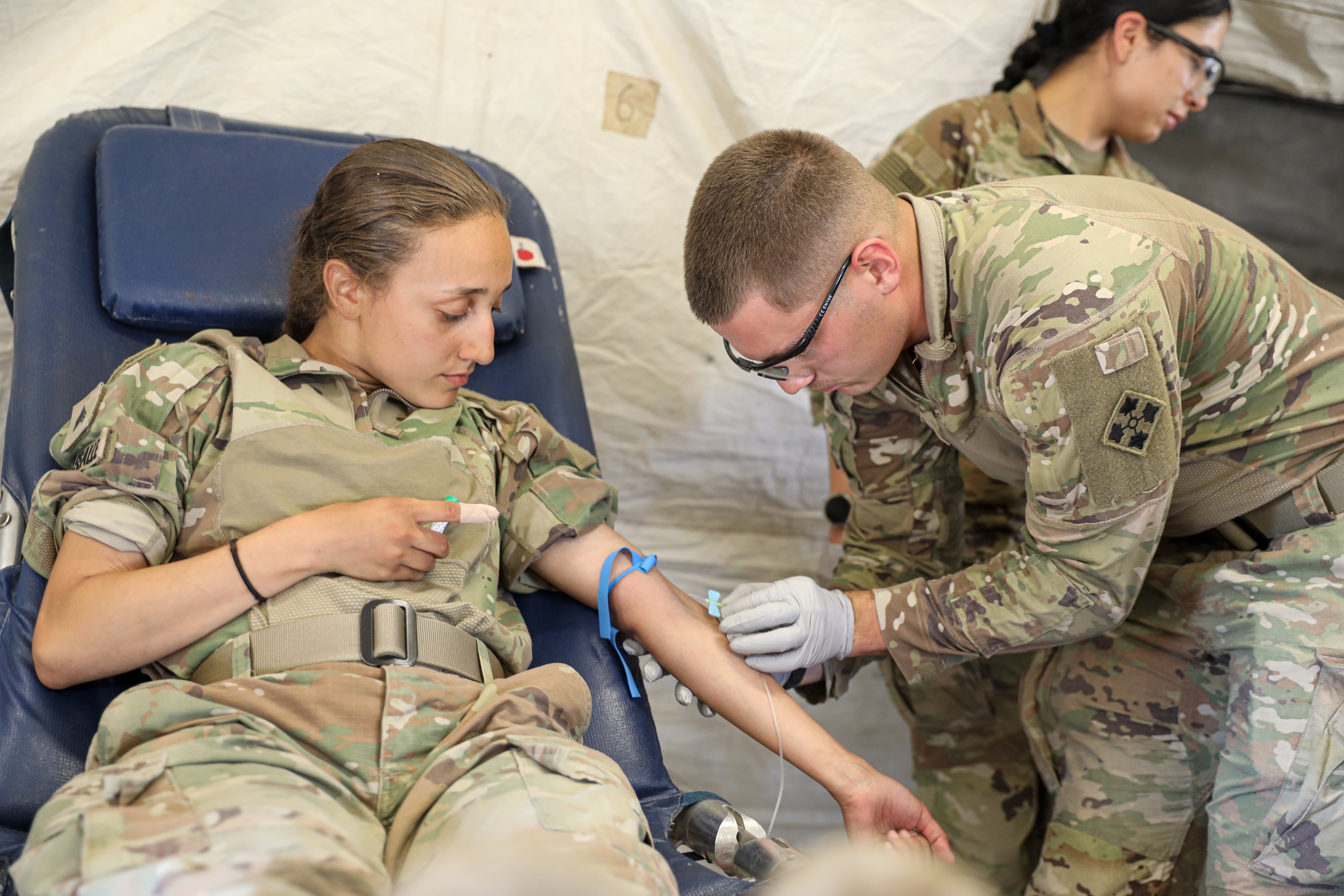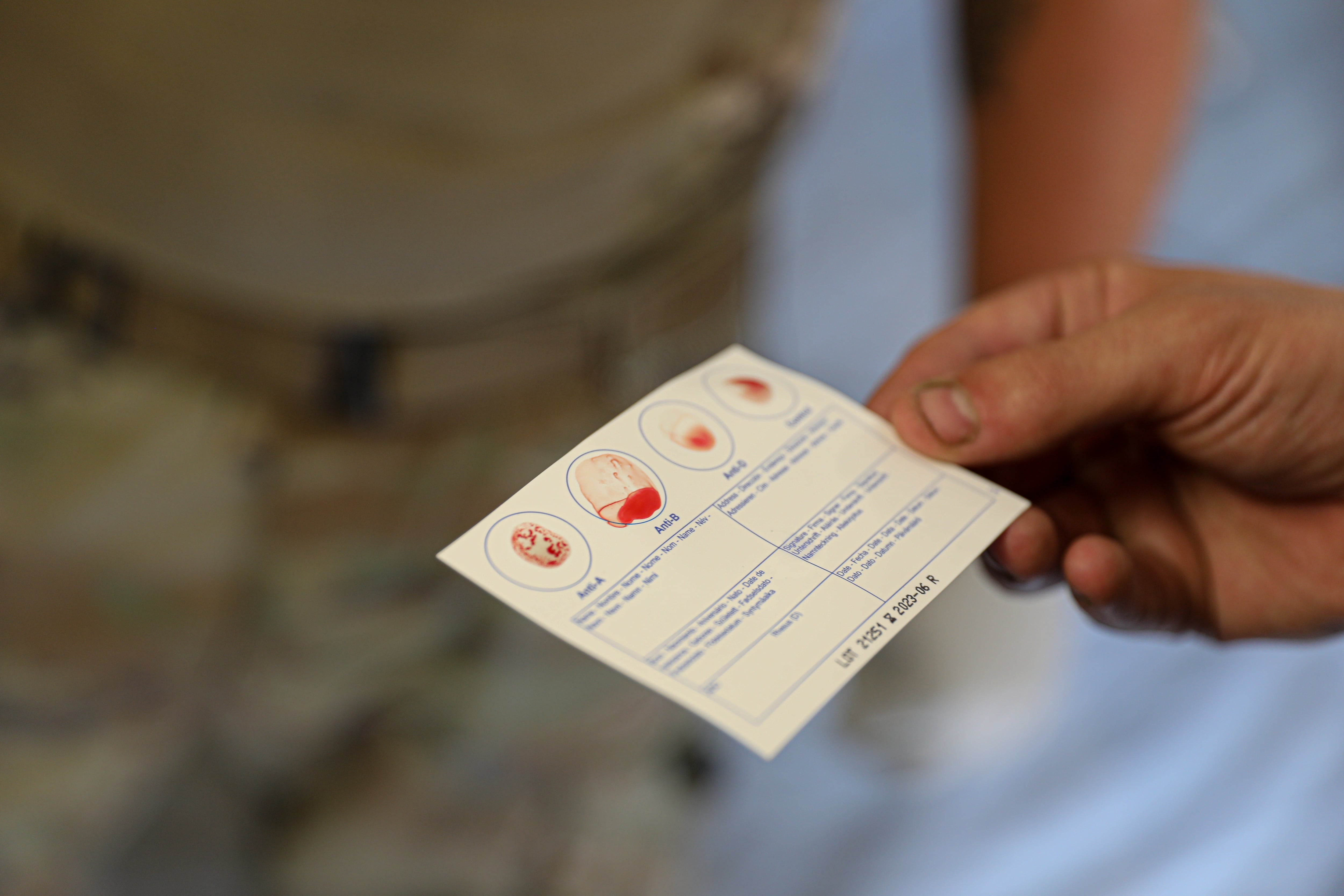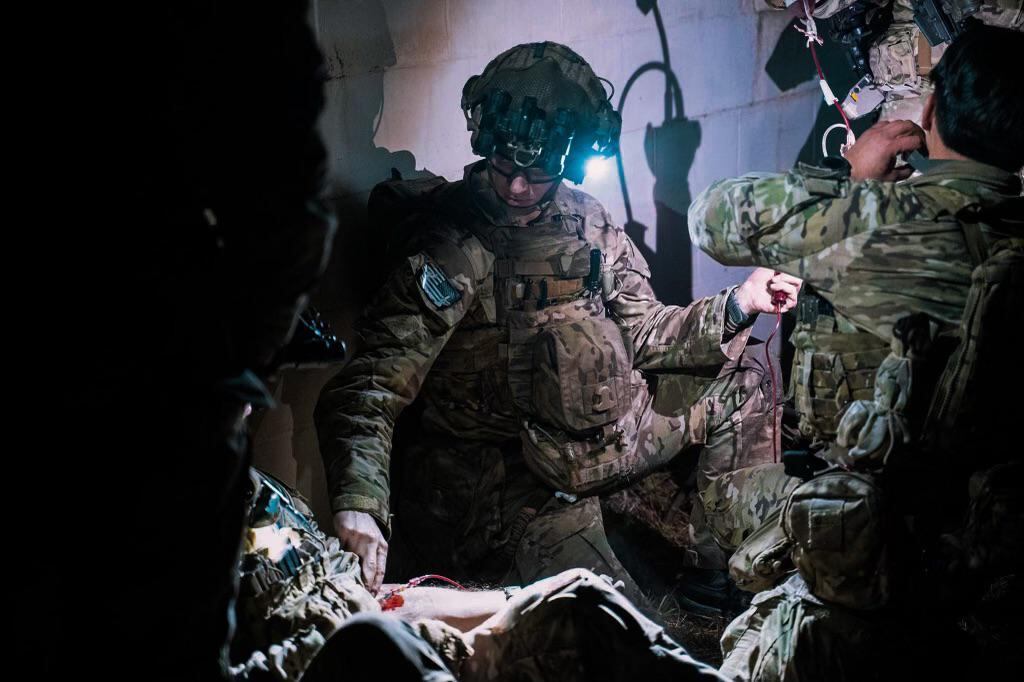HUNTSVILLE, Ala. — When the so-called “Golden Hour” is ticking away for a wounded soldier on the battlefield, every second counts.
As does each drop of blood. Massive blood loss is a leading battlefield killer, staunched only by quick first aid and rapid replenishment.
But as the Army restructures and prepares for a potential large-scale war, the service’s medical planners recognize that getting patients to fully equipped hospitals in such a conflict may take days, and getting temperature-controlled blood products to the front lines might be even more difficult.
Army Times attended a discussion panel at an Association of the U.S. Army event a few weeks ago about the battle to move blood during the next conflict. Panelists argued that training conventional medics on extended casualty care will ensure blood transfusions start as close to the front as possible and buoy survival rates.
Enter the walking blood bag, sometimes also called a walking blood bank.
The idea isn’t entirely new. In fact, according to a 2006 trauma studies paper, U.S. military doctors have used fresh donor blood in every major conflict since the technique emerged during World War I. Many military hospitals during the Global War on Terror tracked staffers’ blood types in case of mass casualty events that outpaced supply of other blood products.

But the practice is moving closer to the front line.
In recent years, the special operations community pioneered person-to-person whole blood transfusions during combat, a 10-minute process in which a soldier donates blood into a transfer bag and then returns to the fight while it’s administered to their wounded comrade. The 75th Ranger Regiment, the Army’s top light infantry unit, said in a release that such transfusions saved soldiers wounded in Afghanistan during summer 2019.
The panelists want the conventional Army to catch up and push toward the front. While the Marine Corps and some elements of the Army have already started training the concept, one of the Army’s top doctors wants the practice and its training standardized and fielded across the force.
“We have doctrine that talks about walking blood banks,” said Brig. Gen. Mark Thompson, a soon-retiring Army Medical Command logistics planner. “We do not have doctrine that talks about walking blood banks far forward.”
Col. Jason Corley, who helps manage and integrate new blood product technologies, said the service’s Medical Center of Excellence is working “to develop standardized training tasks, lists and methods of instruction” in addition to deciding which Army career fields — such as combat medics — will be tasked to learn the technique.

Thompson said bringing such practices forward to Role 1 aid stations, which provide initial casualty treatment before shipping more serious cases to surgical teams, can help keep patients alive longer on a battlefield where air evacuation may someday be impossible.
The capability integrator, Corley, noted the special operations community’s work provides “a tremendous amount of lessons learned” to guide how the conventional force will embrace walking blood banks.
But both he and Thompson warned that the practice won’t be a cure-all, nor will it always work.
The general highlighted the issue of “scale and supply,” arguing that for conventional forces “the size of the casualty event is likely much larger.”
Corley cautioned that personnel might not always have the sterile supplies needed to pull it off, nor will units always have enough donors with a compatible blood type. But he argued that history shows the practice will be a key part of the next big war.
“We’ve learned in past conflicts that walking blood bank is absolutely a critical capability,” he said. “[I] think it will help us to overcome contested logistics ... and we need to ensure that all of our medical providers across all roles of care can implement it.
Davis Winkie covers the Army for Military Times. He studied history at Vanderbilt and UNC-Chapel Hill, and served five years in the Army Guard. His investigations earned the Society of Professional Journalists' 2023 Sunshine Award and consecutive Military Reporters and Editors honors, among others. Davis was also a 2022 Livingston Awards finalist.





